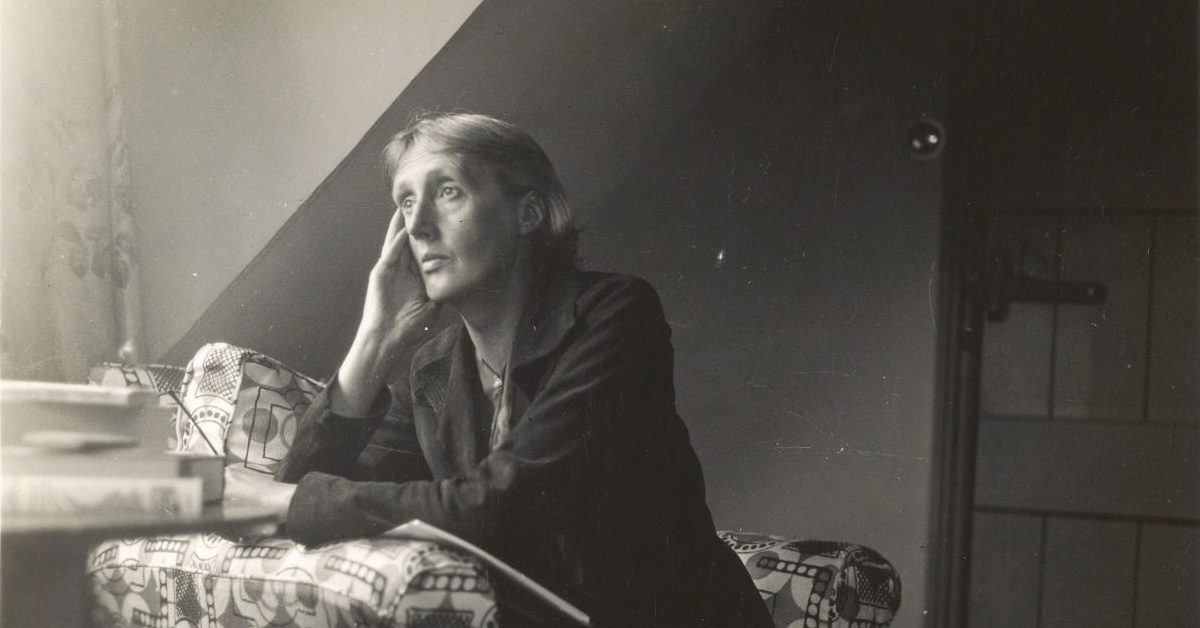
by Helen Tyson

Reading Modernism’s Readers: Virginia Woolf, Psychoanalysis and the Bestseller examines the scene of reading in modernism, psychoanalysis and popular novels from the early twentieth century
The ‘brutal monster’: Marion Milner Reads Mrs Dalloway
In her 1937 book, An Experiment in Leisure, the writer, educationist, and soon-to-be psychoanalyst Marion Milner described lying in bed after the birth of her son ‘repeating the name of a book of short stories’, The Runagates Club, by John Buchan.[1] The name of the book echoing in her mind was ‘so persistent’ that Milner ‘let go […] and simply watched’ her thoughts. As she did, ‘a vague fear grew round the name, and with it the memory of a passage in another book’ that she had ‘just been reading.’ The book is Virginia Woolf’s 1925 novel, Mrs Dalloway:
‘It rasped her, though, to have stirring about in her this brutal monster! To hear twigs cracking and feel hooves planted down in the depths of that leaf-encumbered forest, the soul; never to be content quite, or quite secure, for at any moment the brute would be stirring, this hatred….’
The ‘vague fear’ that prompts the memory of the passage from Mrs Dalloway relates in part to the ‘fearful’ ‘pains of labour’. Milner describes plunging ‘deliberately into a lower darker level of awareness, dimly feeling myself part of a dark swirling current, sinking down into my body, with half thoughts of dark earth and bursting seeds, the bark of trees, the strains of rising sap.’ Certainly, the passage from Mrs Dalloway relates to Clarissa Dalloway’s own complicated feelings about motherhood. The ‘brutal monster’ that Clarissa feels stalking the ‘leaf-encumbered forest’ of her soul is the ‘hatred’ that she feels towards her daughter’s friend, Doris Kilman. As well as representing Clarissa’s maternal possessiveness, this ‘brutal monster’ is also bound up with her complicated and ambivalent feelings about class and sexuality. In Marion Milner’s book, the scene from Mrs Dalloway appears as part of Milner’s quest to trace her own wants and desires in a world that was (and in many ways remains) hostile to women’s pleasures and pastimes.
‘Fear no more the heat o’ the sun’: Mrs Dalloway as a Reader
In Mrs Dalloway, published 100 years ago this year, Clarissa Dalloway walks through the streets of London, reflecting on her own mortality while meditating on her consoling belief in a mystical kind of connection that persists beyond death—her sense that ‘somehow in the streets of London, on the ebb and flow of things, here, there, she survived.’[2] ‘But,’ Woolf asks, ‘what was she dreaming as she looked into Hatchard’s shop window?’
What was she trying to recover? What image of white dawn in the country, as she read in the book spread open:
Fear no more the heat o’ the sun,
Nor the furious winter’s rages.
In the pages that follow, the lines from Shakespeare’s Cymbeline continue to echo in Clarissa’s mind. ‘Fear no more,’ she repeats, ‘Fear no more the heat o’ the sun’ as she ‘shiver[s]’ in the hallway, steeling herself against the ‘shock’ of Lady Bruton asking her husband to lunch.[3] As she sits sewing her dress for her party, the lines appear again: ‘Fear no more, says the heart, committing its burden to some sea, which sighs collectively for all sorrows, and renews, begins, collects, lets fall.’[4] In the final pages before Septimus Smith kills himself by ‘throwing himself’ out of the window, he too repeats these lines: ‘Fear no more, says the heart in the body; fear no more.’[5] And when, standing at the window at her party, Clarissa contemplates the death of the young man she has never met, the words come back to her once more: ‘Fear no more the heat of the sun.’[6] Clarissa does not ‘pity’ Septimus, but feels ‘somehow very like him.’ Although they never meet, the society hostess who is also a victim of the 1918 influenza pandemic, and the shell-shocked First World War veteran are strangely linked in the novel, connected in part through their shared response to Shakespeare’s words. For Clarissa, Shakespeare’s lines seem both to soothe and console, and to offer a further confirmation of her belief in a connection that persists beyond death. But even though Woolf’s writing hints at the idea of literature as offering up a form of reparation, she also asks a question about the capacity of literature to ‘recover’ what we have lost, gently probing her own readers to consider our own investments in the act of reading as we read.
Reading Modernism’s Readers
In my book, Reading Modernism’s Readers: Virginia Woolf, Psychoanalysis and the Bestseller, I examine how scenes of reading like Milner’s and Woolf’s reveal some of our culture’s most powerful and enduring fantasies about the role of literature in individual, social and cultural life. Focusing on the portraits of reading staged within modernist, psychoanalytic and popular writing from the early twentieth century, I explore how real, fictional and imagined readers entertain overdetermined, overlapping, and frequently conflicting fantasies about what it is we are doing when we read books. In the scenes examined within this book, literature appears not only as a source of pleasure and enchantment, but also (and often at the same time) as a buttress of scholarly patriarchal authority, a source of consolation, a vehicle of fantasy and escape, a refuge from modernity, and as a repository of communal belonging. I argue that these portraits of reading present us with the projected readers of modernism, modelling and shaping how we, as readers, respond imaginatively and psychologically to modernist writing.
At the heart of modernist culture, I argue, lies an ambivalent fascination with, and an anxiety about, the pleasures, the possibilities, and the potential perils of the act of reading in an age that was dominated by the psycho-politics of mass culture and what Hannah Arendt would describe as the ‘fungus’-like growth of fascism.[7] In the scenes of reading and other forms of cultural encounter that appear in modernist literature, reading often appears as a process in which the boundaries between self and object, reader and book, dissolve, producing what Milner describes as the ‘dread of annihilation merging into a deep delight.’[8] For Woolf, Milner, and others, the scene of reading was, by the 1930s, increasingly shadowed by these writers’ anxieties about the psycho-politics of mass identification and looming totalitarianism. Reading scenes of reading like Milner’s and Woolf’s, I suggest that modernist literature invites us to think critically about our own encounters with literature and culture, prompting questions about the role of literature in our own lives.
[1] Marion Milner, An Experiment in Leisure (Hove: Routledge, 2011), pp. 17-18.
[2] Virginia Woolf, Mrs Dalloway, ed. David Bradshaw (Oxford: Oxford University Press, 2000), p. 8.
[3] Woolf, Mrs Dalloway, p. 25.
[4] Woolf, Mrs Dalloway, p. 34.
[5] Woolf, Mrs Dalloway, p. 126, p. 118.
[6] Woolf, Mrs Dalloway, p. 158.
[7] Hannah Arendt, ‘Letter to Gershom Sholem’, in The Jewish Writings, ed. by Jerome Kohn and Ron H. Feldman (New York: Schocken, 2007), p. 471.
[8] Marion Milner, A Life of One’s Own (Hove: Routledge, 2011), p. 151.
About the author
Helen Tyson is an Associate Professor at the University of Sussex, where she is Co-Director of the Centre for Modernist Studies. Helen’s book, Reading Modernism’s Readers: Virginia Woolf, Psychoanalysis and the Bestseller was published by Edinburgh University Press in 2024.






